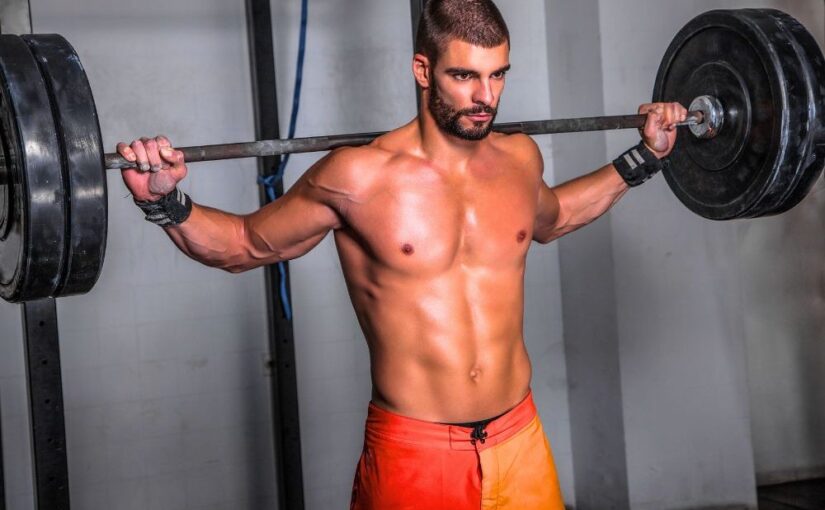Becoming stronger without gaining muscle is a realistic goal for many athletes and fitness-minded individuals. Whether you’re maintaining a weight class for competition or just want more functional strength without added bulk, it’s absolutely achievable. By using the right training methods, recovery strategies, and nutritional approach, you can build serious strength without increasing muscle size.
1. Focus on Neuromuscular Adaptations
Getting stronger without gaining muscle often starts with improving how your brain and muscles communicate. This process is called neuromuscular adaptation, and it’s key for strength development without size increases.
Here’s how to train for neuromuscular efficiency:
- Low Reps, Heavy Weight: Stick to 1–5 reps per set using 85–95% of your one-rep max.
- Explosive Lifts: Incorporate fast, powerful movements like kettlebell swings, cleans, or snatches.
This type of training helps you recruit more muscle fibers without triggering significant hypertrophy.
2. Incorporate Isometric Training
Isometric exercises build strength by holding positions under tension—without changing muscle length or encouraging growth.
Try adding these to your routine:
- Planks: Great for core and shoulder stability.
- Wall Sits: Build endurance and strength in the lower body.
- Static Holds: Pause at the peak of exercises like chin-ups or push-ups.
Isometric work improves stability and force output while keeping muscle size in check.
3. Increase Training Frequency (Smartly)
Training more frequently—without overtraining—can improve strength while limiting muscle growth.
How to make it work:
- Use a split routine to hit muscle groups multiple times a week.
- Keep sessions brief but intense, focusing on good form and explosive reps.
Higher frequency can improve movement efficiency and total strength output without promoting hypertrophy.
4. Prioritize Compound Movements
Compound lifts are essential when aiming to get stronger without gaining muscle. They activate more muscle groups and stimulate your central nervous system effectively.
Key lifts include:
- Squats
- Deadlifts
- Bench Press
- Pull-Ups or Chin-Ups
By focusing on total-body movements, you build strength efficiently without isolating muscles in a way that promotes mass.
5. Optimize Your Nutrition
Nutrition can either support or sabotage your goal to stay stronger without gaining muscle. It’s all about maintaining energy levels without pushing into muscle-building mode.
Key strategies:
- Caloric Maintenance: Don’t eat in a surplus. Fuel your workouts but avoid extra calories.
- Moderate Protein: Stick to 1.2–1.6g per kilogram of body weight—enough for recovery, not bulk.
- Whole Foods & Hydration: Focus on quality nutrition and stay well hydrated for performance and recovery.
6. Use Advanced Training Techniques
Advanced methods can help develop power and control without size increases.
Examples:
- Plyometrics: Jumping and bounding drills build explosiveness.
- Tempo Training: Slowing the eccentric (lowering) phase increases control and strength.
- Contrast Training: Pair heavy lifts with explosive movements (e.g., squat + jump).
These techniques focus on the nervous system rather than muscle expansion.
7. Emphasize Recovery
Recovery is where strength gains happen, even without muscle growth.
Build recovery into your routine:
- Sleep Well: Aim for 7–9 hours per night.
- Active Recovery: Try walking, light cycling, or yoga on off days to reduce fatigue without stress.
- Rest Between Sets: Take longer rest (2–5 minutes) when training for strength over size.
Conclusion
You can absolutely get stronger without gaining muscle by focusing on nervous system efficiency, lifting heavy with low reps, incorporating isometric exercises, and fueling your body wisely. When paired with intentional recovery and advanced training techniques, this approach boosts strength without adding bulk. It’s an effective way to enhance performance while maintaining your current weight and physique. Stay consistent, train smart, and the results will follow.
Frequently Asked Questions (FAQ)
Yes. Strength gains often come from neuromuscular adaptations—improved coordination between your brain and muscles—rather than muscle size. With the right training approach, you can increase strength without significantly increasing muscle mass.
Low reps (1–5 per set) with heavy weights (85–95% of your one-rep max) are most effective for strength gains while minimizing muscle growth. This rep range primarily targets neural efficiency rather than muscle volume.
Compound lifts like squats, deadlifts, and bench presses don’t inherently lead to muscle gain. It comes down to how you structure your workouts. Using lower reps and avoiding caloric surplus can allow you to gain strength without adding bulk.
No, protein is still essential for recovery and strength. However, you don’t need to consume it in large amounts. A moderate protein intake—around 1.2 to 1.6 grams per kilogram of body weight—can support strength and recovery without significantly contributing to muscle growth.
Recovery is just as important—if not more—when training for strength. Your nervous system needs adequate rest to adapt. Quality sleep, proper hydration, and active recovery help prevent fatigue and allow you to continue progressing without injury.
Related Products for Strength Training Without Size (Affiliate Links)
These accessories can support your training goals by enhancing neuromuscular development, improving technique, or aiding recovery—without focusing on hypertrophy.
| Product Type | Use | Link |
|---|
| Resistance Bands (Heavy-Duty) | Assist with mobility drills and control | View on Amazon |
| Adjustable Weight Vest | Add resistance to bodyweight movements | View on Amazon |
| Speed & Agility Ladder | Improve neuromuscular coordination | View on Amazon |
| Grip Strength Trainer | Build grip and forearm strength | View on Amazon |
| Foam Roller | Aid in recovery and reduce soreness | View on Amazon |
Affiliate Disclaimer
The links above are affiliate links. This means we may earn a small commission if you choose to make a purchase—at no additional cost to you. These products were selected based on relevance to the training methods discussed.

